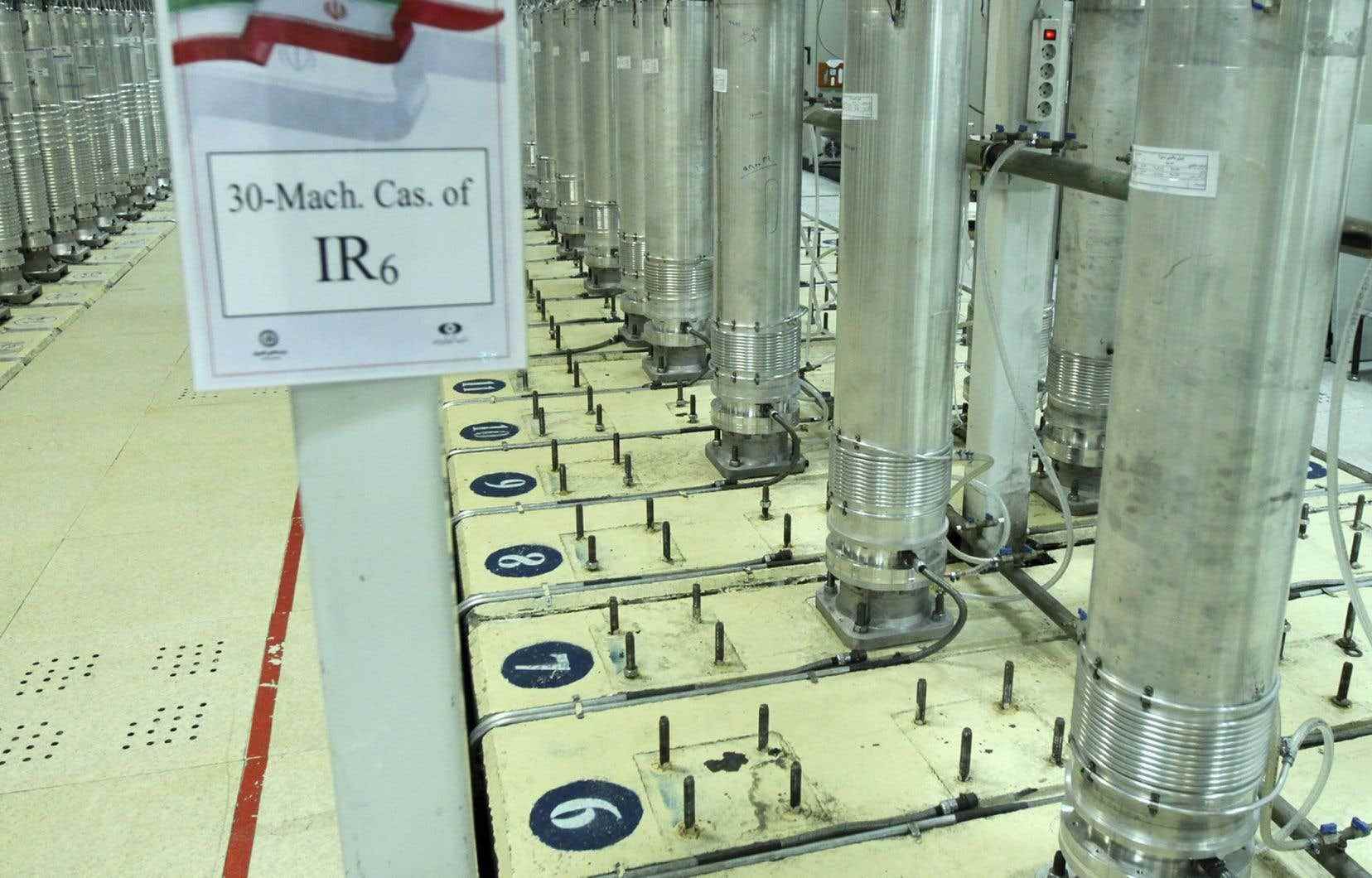Iran has started producing 60% enriched uranium at its Fordo plant, in yet another breach of its commitments to major powers, in response to a critical resolution adopted by the International Energy Agency atomic (IAEA).
This 60% threshold announced on Tuesday greatly exceeds that of 3.67% set by the 2015 agreement between Tehran and the West aimed at preventing Iran from acquiring atomic weapons. Uranium enriched to 90% is needed to produce an atomic bomb.
Under the agreement, Iran had agreed to freeze its enrichment activities at Fordo, an underground plant located 180 kilometers south of Tehran. The site had however been put back into service in 2019 and recently modified with a view to obtaining better efficiency.
“The production of 60% enriched uranium at Fordo began on Monday,” the head of the Iranian Atomic Energy Organization (AEOI), Mohammad Eslami, was quoted by the Isna news agency as saying on Tuesday.
“We said that political pressure does not change anything and that the adoption of a resolution (at the IAEA) will provoke a serious reaction” from Iran, he added.
The 2015 pact, known by its acronym JCPOA, offers Iran relief from international sanctions in exchange for guarantees to ensure that Tehran will not acquire atomic weapons, a goal that the Islamic Republic has always had. denied sue.
But following the withdrawal of the United States from the JCPOA in 2018, at the instigation of Donald Trump, and the reinstatement of American sanctions which are stifling its economy, Tehran has gradually freed itself from its obligations.
Main measure of this disengagement, Tehran had initiated in January 2021 the process intended to produce uranium enriched to 20% in the Fordo plant.
Then in April 2021, Iran announced that it had started producing 60% enriched uranium at the Natanz site (center), approaching the 90% threshold.
On Sunday, Iran announced that it had taken retaliatory measures against the IAEA following a resolution criticizing Tehran’s lack of cooperation, presented by the United States and three European countries (the United Kingdom, France and Germany ).
This resolution voted last Thursday by the Board of Governors of the UN agency is the second this year, after that of June. Russia and China voted against.
The reason for the discord at the origin of the two resolutions is the same: the absence of “technically credible” responses from Tehran concerning traces of enriched uranium found at three undeclared sites.
“Second action”
This file is one of the main points on which the negotiations started in April 2021 in Vienna to revive the 2015 agreement stumble. After positive signals in August, the talks are now at a standstill.
Tehran is indeed demanding a closure of the IAEA investigation to reach a compromise with its direct interlocutors (Germany, France, Great Britain, China and Russia), while the United States participates indirectly.
At the end of October, the head of American diplomacy, Antony Blinken, said he had little hope for a quick outcome of the discussions.
Iran announced on Sunday that the retaliatory measures had been implemented the same day “in the presence of IAEA inspectors” at the Natanz and Fordo sites.
“In a second action in response to the resolution, Iran injected gas into two other IR-2m and IR-4 (centrifuge) cascades at the Natanz site,” the ISNA news agency reported on Tuesday.
In a report seen by AFP, the IAEA reports accumulated enriched uranium stocks of 3673.7 kg as of October 22, a total of 267.2 kg lower than in August but much higher. the 202.8 kg ceiling to which the Islamic Republic had committed in 2015.
Above all, Iran is always enriching at high levels, far from the limit set at 3.67%: it thus has 386.4 kg at 20% (against 331.9 kg previously) and 62.3 kg at 60% (against 55.6 kg).
This ramp-up is also occurring as the IAEA faces a sharp restriction in its inspections.
A resumption of dialogue seems all the more difficult as Iran has been shaken by popular protest since the death on September 16 of a 22-year-old young woman, Mahsa Amini, who died after her arrest by the morality police.
